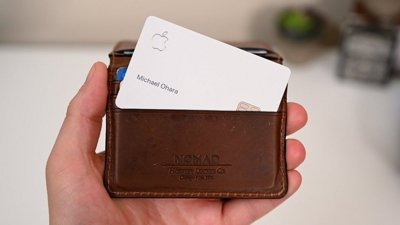NAND flash to play bigger role in future Mac and iPod models
Apple Inc. plans extensive use of NAND flash memory in future Mac and iPod models, which will include a new sub-notebook and widescreen video iPod, according to one Wall Street analyst.
"This is a new subnotebook form factor that will use NAND flash as primary storage," he wrote in a note to clients on Wednesday morning. "Our sources indicate that Apple would like to introduce the product in [the second half of 2007] to further capitalize on its strong MacBook growth, but timing will be dependent on NAND vendors' ability to drive down pricing further, making it economically attractive for Apple."
At the same time, Wu confirmed ongoing industry speculation that Apple will inevitably shift its flagship video iPod players to NAND from hard disk drive (HDD) storage, but warned the transition was unlikely in the near-term.
"Our sources indicate that while Apple plans to migrate the rest of its iPod product line to NAND flash from HDDs (the current vPod is the only model remaining), fairly low price points and customer appetite for high storage capacities will likely prevent this from happening until late 2007-2008," he told clients. The analyst noted that despite the aggressive price reductions in NAND flash over the past few years, his analysis indicates that mobile HDD storage still has around a 7 to 8 times the price advantage of NAND, which is down slightly from 10 times a year ago.
"Today 1 GB of NAND flash costs around $5, meaning 32 GB costs $160, which compares to $22 for the same amount of HDD storage," he explained. "Through 2007, NAND flash in notebook PCs will likely be limited to the high-end/ultra-portable market."
In addition to schooling clients on the price effectiveness of NAND versus HDD, Wu said he has learned that a widescreen video iPod "won't likely ship until after iPhone ships in the June timeframe to not take away from iPhone's launch." In the meantime, he anticipates storage capacity increases to the current line of video players, which are presently at 30GB and 80GB, respectively.
The American Technology Research analyst maintained his Buy rating on shares of the consumer electronics maker with a price target of $115 per-share.
"We see several additional catalysts in the quarters ahead, including Mac OS X Leopard, new movie and carrier partners, lower cost cell phones, and further extension of its core technology franchise into new business areas," he wrote.
 Katie Marsal
Katie Marsal










 Chip Loder
Chip Loder
 Andrew Orr
Andrew Orr
 Marko Zivkovic
Marko Zivkovic
 David Schloss
David Schloss

 Malcolm Owen
Malcolm Owen

 William Gallagher
William Gallagher






